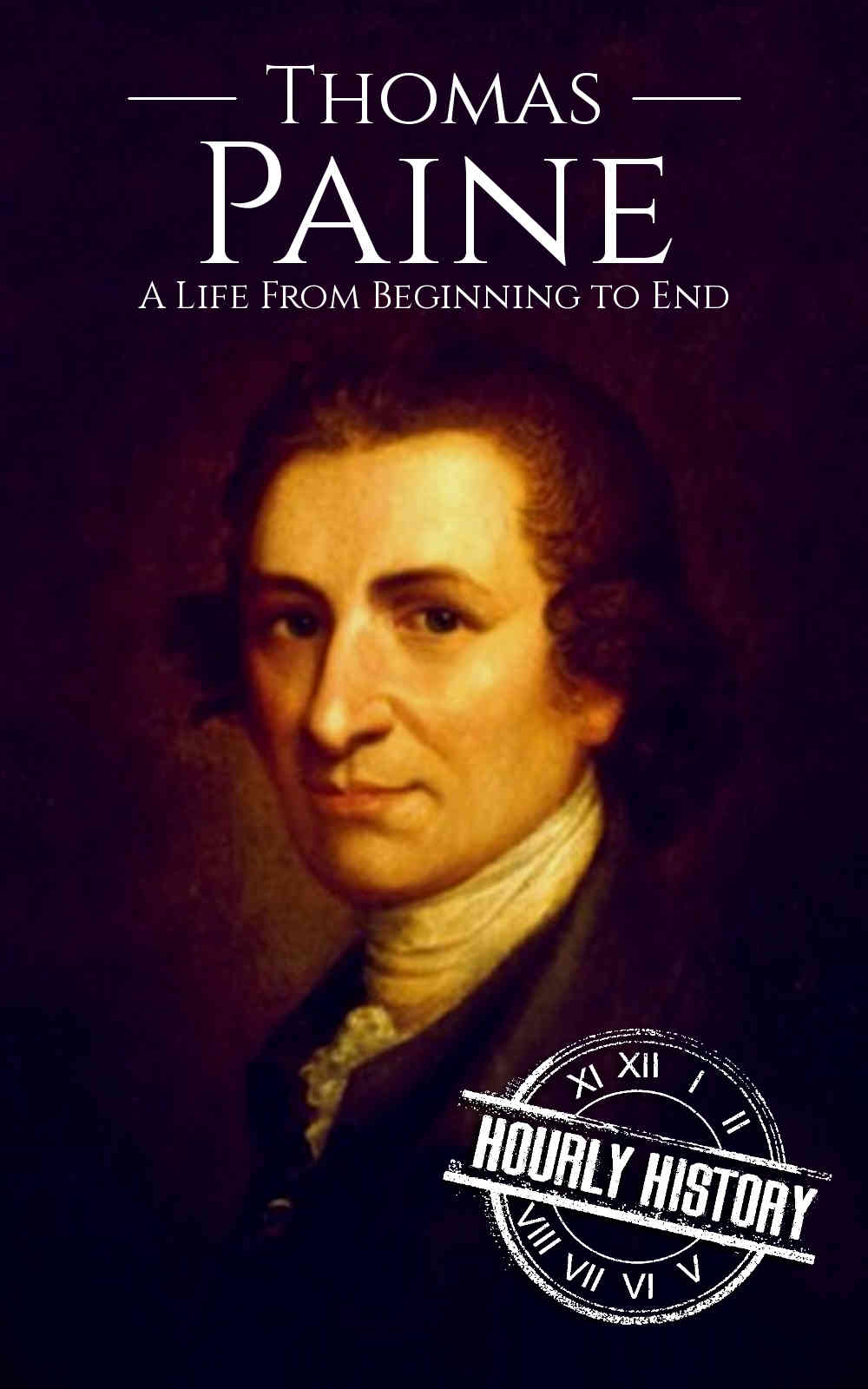The mind of Thomas Paine was gifted to the American Revolution at just the right time. Right when the fervor of the revolutionary spirit was beginning to subside, the pen of Thomas Paine came along and ignited the fires of American liberty once again. Yet decades later, when Paine returned to the American shores that he helped liberate, he was met with a bitter homecoming. Paine had arrived right on the heels of his association with bloody upheavals in revolutionary France and the publication of his unapologetically anti-Christian tracts, which did go over well in an America swept by the Second Great Awakening. Both of these aspects of his intellectual life made him an insufferable outcast, shunned by nearly all of his former associates. But Thomas Paine always knew that life was a gamble, and depending on the factors involved he was variously known as the greatest hero of the republic, or the greatest villain.
Inside you will read about...
✓ On the Seas during the Seven Years’ War
✓ The Loss of His Wife and Child
✓ The Father of the American Revolution
✓ Rallying Behind the French Revolution
✓ Escaping the Guillotine
✓ An American Outcast
And much more!
Now that the dust of history has finally begun to settle, we can get a much clearer view of who Thomas Paine was. This book seeks to cut through the hype and hyperbole to present to you the life of an unapologetic patriot and inveterate freethinker—Thomas Paine, the father of the American Revolution.
Timeline
Feb 9, 1737
Born in Thetford, Norfolk, England
Thomas Pain (later changed to Paine) was born in Thetford, Norfolk, England.
1744-1749
Attended Thetford Grammar School
Paine attended Thetford Grammar School for five years.
1750
Began work as a staymaker
At age 13, Paine began work as an apprentice for his father’s business as a staymaker, making stay ropes used on the masts of sailing vessels.
Nov, 1756
Ran away to London
In late 1756, 19-year-old Paine ran away to London and signed up as a ship hand for a naval ship called the Terrible. His father tracked him down in time to persuade him to give up his plans (Britain was engaged in the Seven Years’ War with France at the time). Fortunately, Thomas acquiesced. The Terrible would soon thereafter engage in fierce battles against the French and was in the end defeated by a French privateer called Vengeance. The few surviving members of the Terrible’s crew were subsequently taken prisoners—a fate which Thomas Paine narrowly escaped thanks to his father’s intervention. Instead, Paine set up shop as a staymaker in London.
Jan, 1757
Set out to sea
Paine joined the crew of the King of Prussia for a six-month’s stint on the high seas.
1759
Opened a staymaking shop in Kent
At age 22, Paine opened his own staymaking shop in Sandwich, Kent.
Sep 27, 1759
Married Mary Lambert
Paine married a local girl named Mary Lambert.
1760
Mary died after giving birth to a stillborn child
Sadly, Paine’s wife Mary died after giving birth to a stillborn child. At the same time, Paine’s shop staymaking business failed.
1762
Started work as an excise officer
After moving back to his hometown of Thetford, Paine started work as an excise officer, inspecting shipments arriving by boat and collecting customs duties and taxes.
Feb 11, 1768
Moved to Sussex
Paine moved to Lewes, Sussex for a new position as an excise officer. He moved in as a boarder at the home of local tobacconist Samuel Ollive. During this time, Paine started taking an interest in politics.
Mar 26, 1771
Married his second wife, Elizabeth Ollive
Married Elizabeth Ollive, his landlord’s daughter.
1772
Paine printed his very first political pamphlet
Thomas Paine crafted his very first political pamphlet, a 12-page article called The Case of the Officers of Excise, in which he put down all of the complaints of his fellow excise officers and addressed the powers that be for immediate change in their working conditions. One of the chief complaints that Paine leveled was the fact that the average excise officer on patrol only received £50 a year.
Jun, 1774
Met Benjamin Franklin
After he was dismissed from his work as excise officer, Paine and his wife separated. Paine then moved to London where he first met Benjamin Franklin. Franklin recommended Paine to move to colonial America and supplied him with a letter of recommendation.
Nov 30, 1774
Moved to the United States
Thomas Paine arrived in Philadelphia, Pennsylvania.
1775
Worked as an editor and writer
Paine contributed articles to several newspapers and worked as editor for the Pennsylvania Magazine. Paine championed such things as greater rights for the average worker, abolition of slavery, and independence from British rule.
Jan 10, 1776
Common Sense was published
In Common Sense, Paine masterfully presented the argument for American independence in a light that Americans could easily understand and identify with. Signed “by an Englishman,” this one publication quickly had over 100,000 copies in circulation throughout all 13 American colonies.
Jul 4, 1776
The Declaration of Independence was issued
The official Declaration of Independence was issued.
Dec, 1776
The American Crisis was published
In The American Crisis, Paine sought to rally the troops and encourage the fight against the British. The pamphlet was read aloud to the Continental Army on December 23, 1776, three days before the Battle of Trenton.
1776-1779
Paine was appointed as Secretary to the Congressional Committee on Foreign Affairs
For three years, Paine served as the Secretary to the Congressional Committee on Foreign Affairs.
Feb, 1781
Went to France to seek support for the American cause
In 1781, Paine accompanied a delegation to France. The group’s objective was to gain a loan from the French in order to help the Americans continue the war effort against the British. The group returned to America in August, having secured a loan of 10 million, as well as a gift of 6 million. In addition to securing these financial infusions, Paine had also networked with several important figures during his time in Paris who aided him in creating the Bank of North America as an ongoing finance arm for the Continental Army.
Oct 19, 1781
The Americans and the French win the Battle of Yorktown
American and French forces decisively defeated the British in Yorktown, Virginia, which led to the beginning of peace talks between the new United States of America and its former overlords, the British.
1787
Paine went to France
In France, Paine became involved with prominent Frenchmen such as the Marquis de Lafayette, a general who had participated in the American Revolution. During the next couple of years, Thomas Paine would travel back and forth between Britain and France, consulting with intellectuals on both sides of the Channel.
Feb, 1791
Rights of Man was published
Paine’s Rights of Man and its continuation Rights of Man, Part the Second, Combining Principle and Practice, published in 1792, became a must-read among the working class of Britain. In Rights of Man, Paine defended the French Revolution and the basic civil rights he believed should be bestowed, even going so far as to call Britain an illegitimate government.
1792
Banished from Britain
Because of his publication of Rights of Man, Paine was indicted for sedition in Britain. He was found guilty in absentia and would not be able to return to Britain again.
Dec 28, 1793
Imprisoned in France
Paine was arrested because of his involvement in the French Revolution. Slated for execution along with countless other victims of France’s unrelenting crackdown on subversives, Paine is said to have only very narrowly avoided the guillotine.
Nov 4, 1794
Released from prison
Paine was released from prison.
1794
The Age of Reason is published
Paine’s treatise on religion, entitled The Age of Reason, was published in three parts in 1794, 1795, and 1807. In it, Paine made his beliefs clear by unequivocally stating that “all national institutions of churches, whether Jewish, Christian or Turkish, appear to me no other than human inventions, set up to terrify and enslave mankind, and monopolize power and profit.”
1795
Return to the French political scene
As soon as he was released from prison, Paine went back into the fray, and by the summer of 1795, he was allowed back into France’s reorganized National Convention. The convention sought to draft yet another constitution, and Paine was one of the few to oppose the new draft due to its exclusion of universal suffrage.
Nov 9, 1799
Bonaparte seized control of France
Napoleon Bonaparte, a French general of Italian descent, managed to seize power in France on November 9, 1799. Napoleon was awarded the title of first consul over the French Republic for ten years. Although Napoleon’s role was crafted in language that would make his position seem to be a temporary one, this was actually the beginning of a long dictatorship.
1802
Returned to the United States
As Napoleon’s dictatorship grew more and more oppressive, Paine decided to return to the United States. Paine arrived in Baltimore in 1802, and the timing couldn’t have been worse as far as his popularity was concerned among the American people. Paine was despised by religious groups, he was considered suspect for the role he played in the revolution in France, and he was reviled for his attacks on George Washington.
Jun 8, 1809
Paine died at age 72
Aged 72, Thomas Paine passed away in New York City.


